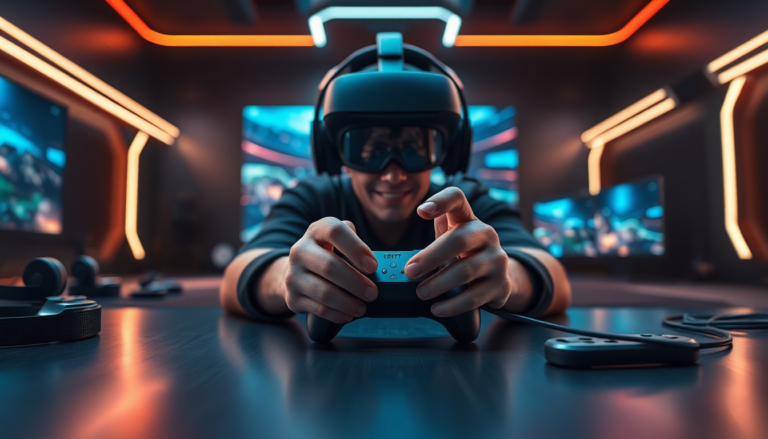Argomenti trattati
Imagine diving into a game where you can actually feel the texture of the surfaces you touch. This isn’t just a dream anymore; advancements in haptic technology are paving the way for an immersive gaming experience that goes beyond mere visuals. The latest innovations in haptic feedback devices are set to transform how we interact with virtual environments. With each technological leap, the line between reality and virtuality blurs further, creating a sense of presence that many gamers have only fantasized about.
The evolution of haptic feedback
Haptic feedback has been a staple in gaming for years, primarily through simple rumble features in controllers. However, this form of feedback often falls short of providing a truly engaging experience. The advent of Virtual Reality (VR) has pushed the boundaries of this technology, leading to the development of more sophisticated haptic systems. Devices such as gloves and vests that simulate touch sensations are becoming increasingly common, enriching the gameplay experience.
One fascinating example of this evolution is the recent introduction of the Shiftly device, designed to replicate various textures through complex origami folds. This device represents a significant leap forward, as it can quickly adapt to create different shapes and surfaces in response to user interactions. Imagine exploring a vast virtual world, and as you touch a rock or a piece of alien technology, you can actually feel the difference in texture and form. This is the kind of immersive experience that Shiftly promises, enhancing the realism of virtual environments.
How Shiftly works
So, how does this innovative device operate? Shiftly utilizes an intricate folding mechanism to mimic various textures. In tests, users were blindfolded and asked to touch the device, subsequently identifying shapes based on their tactile experience. The results were promising; users reported that Shiftly effectively replicated most simple surfaces. The speed of its transitions is equally impressive—it can morph between shapes in as little as 0.25 seconds for simple configurations, while more complex shapes take around four seconds. This rapid adaptability opens up exciting possibilities for game developers looking to integrate tactile feedback into their titles.
However, it’s important to note that while Shiftly excels at representing curves and waves, it struggles with more complex shapes like mugs or intricate handles. Despite this limitation, the potential applications in gaming are vast. Developers could create games where players feel the unique textures of different materials, such as the roughness of a stone or the smoothness of metal when interacting with objects in the game world.
Potential gaming applications
Envision playing a game like No Man’s Sky, where the minerals on the countless new planets each have distinct textures that you can feel as you explore. Or consider a combat-heavy game like Gorn, where the feel of different weapons would enhance the immersion. The thought of a tactile box in a bomb-defusal game, changing its surface as you interact with virtual wires and buttons, is enough to make any gamer excited.
As the technology matures, I can’t help but think about the endless possibilities. Personally, I believe that incorporating haptic feedback will elevate the emotional engagement in gaming, creating deeper connections between players and their virtual experiences. I remember when VR first started gaining traction; I was skeptical about its long-term potential, yet here we are, on the cusp of a tactile revolution!
The future of gaming with haptic feedback
While we may not be able to experience fully realized haptic feedback in games yet, the advancements being made today hint at a bright future. As developers begin to explore the capabilities of devices like Shiftly, we can expect a transformation in how games are designed and played. The integration of advanced haptic technology will not only enhance gameplay but will also offer new ways for storytelling—immersing players in narratives like never before.
So, as I strap on my VR headset and take a step into my virtual treadmill, I can’t help but feel a sense of anticipation. The future of gaming is just around the corner, and who knows? Soon, we may not just see and hear our games; we might actually touch them. Exciting times are ahead!

